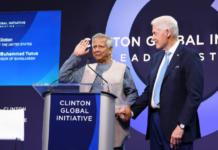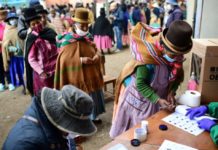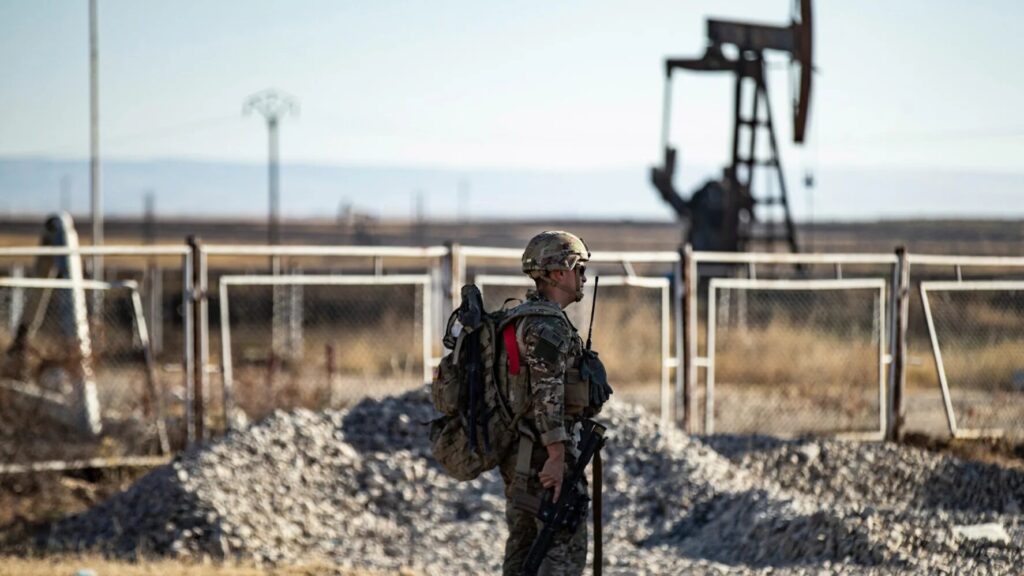
Part 1 of a series exposing the farce of so-called U.S. “democracy promotion”
If Americans know anything about U.S. involvement in Syria, they probably think of the recent Syrian Civil War (2011 to 2024). However, U.S. intervention in Syrian affairs goes back almost to Syrian independence from French colonialism in 1946.
These U.S. interventions in Syria leading up to the 2011 war are tied to the development of a neo-colonial form of “democracy promotion,” as well as the proliferation of military rule and religious sectarian violence in the Middle East (hereafter referred to as West Asia) region.
Syria, the CIA’s Testing Ground for Democracy Promotion
U.S. intervention in Syria during Syria’s early years of independence represents the first U.S. attempt to promote democracy in West Asia. The first U.S. covert operations in Syria occurred in July 1947, just before the Central Intelligence Group was rechristened as the Central Intelligence Agency (CIA). This was also before the CIA’s infamous rigging of the 1948 Italian elections to keep the communists out of power there.

U.S. covert operations in Syria aimed to influence the 1947 elections in favor of U.S. interests. The leading CIA officer on the Syrian operations, Miles Copeland, Jr., benignly claimed that they simply helped the Syrian elections run cleaner and fairer, but also pushed Syrians to elect “the right kind of leaders.” The right kind of leaders, of course, meant those compatible with the desires of the U.S. government. Copeland asserted that U.S. officials approached Syria as a pilot project to test their abilities to democratize West Asia.[1]
In an interview with Rolling Stone in 1986, Copeland said: “Unlike The New York Times, Victor Marchetti, and Philip Agee, my complaint has been that the CIA isn’t overthrowing enough anti-American governments or assassinating enough anti-American leaders, but I guess I’m getting old.”[2]
However, when the U.S. became dissatisfied with the elected government, the CIA encouraged a military coup that contributed to more than a decade of instability and short-lived dictatorial governments.[3]
The 1949 military coup government of Husni al-Za’im, the first of its kind in modern West Asia, would last less than five months. Yet, this was no trivial regime change.
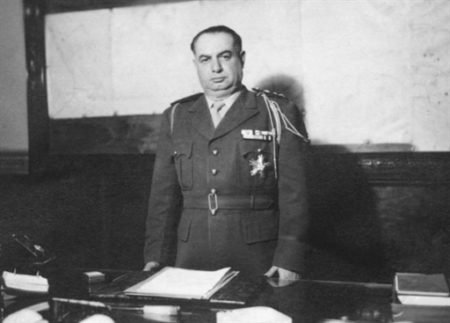
The Za’im coup set a precedent in the region that compelled groups to develop military cells if they wanted to both keep themselves safe and have an easy path to obtaining power. As historian, Dr. Abdel Razzaq Takriti said, “The first entry of the military into Arab modern political life was a CIA-orchestrated entry…This was not a minor event because it established a very serious and dangerous precedent, but also it had a snowball effect. You have a situation where everything accumulates, everything grows, grows, grows, and then it becomes unstoppable. And it becomes a self-propelling force, this military intervention in politics.”[4]
Indeed, this view of the military as the easiest and most effective route to gaining political power would influence regional politics for decades to come, including the Syrian Ba’ath (Arabic for Renaissance) Party, which itself came to power via military coup in 1963.
While Syrians suffered weak and unstable governance distorted by foreign and military interference, the CIA continued its subversive activities throughout the 1950s in close collaboration with Britain. Fearing a leftward drift in Syrian politics, the CIA tried—but failed—to instigate a military coup in 1956 and again in 1957. These failures served to push Syria further toward a pro-Soviet stance that would outlive the Cold War.[5]
In 1956, the U.S. and UK organized a failed coup attempt called “Operation Straggle.” Primarily instigated by the UK, Operation Straggle was tied up with broader British efforts to prop up their allied Hashemite monarchy in Iraq and undermine the most powerful anti-imperialist state in the region, Egypt, led by Gamal Abdel Nasser. The CIA invested 500,000 Syrian Pounds (167,000 in U.S. dollars at the time) for the coup.[6]
The coup failed to materialize when the CIA’s leading Syrian organizer, Mikhail Bey Ilyan, called it off at the last minute and fled to Beirut, Lebanon. Israel, followed by Britain and France, had just invaded Egypt to seize the Suez Canal in what became the Suez Crisis. The Syrian plotters thought it suicidal to try to overthrow the government while Zionist and imperialist forces invaded a fellow Arab nation.[7]
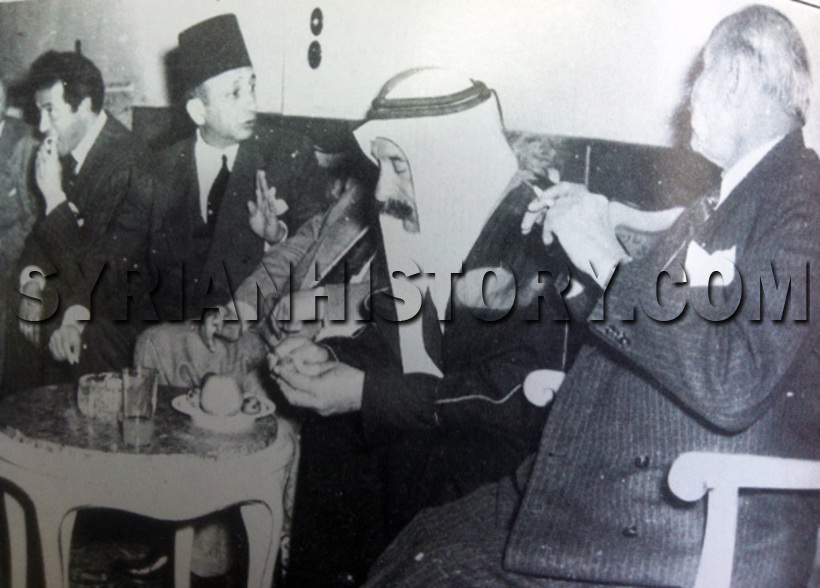
The 1957 coup attempt was even more farcical. The CIA hoped to install Adib Shishakly, former military strongman of Syria from 1949 to 1954, by bribing Syrian military officers. However, the would-be Syrian coup leaders quickly went to the Syrian intelligence offices, turned in the bribe money, and reported the CIA officers who paid them.[8]
The Syrian government, dismayed by the repeated U.S. violations of Syrian sovereignty, sought greater security by aligning closer to the Soviet Union and creating a union with Nasser’s Egypt called the United Arab Republic in 1958.
The Ba’ath Party and Sectarian Violence
Covert U.S. and UK operations had failed to bring Syria into the Western fold, but Syria’s government remained unstable until the Syrian Ba’ath Party took power in 1963. Shortly thereafter, the Syrian government banned the Syrian branch of the Muslim Brotherhood.
The Muslim Brotherhood (popularly known as al-Ikhwān, or the Brotherhood) is a transnational Sunni Salafi Islamist organization that was against the secularism of the Syrian Ba’ath government. They also viewed the minority Alawite population, represented by Hafez al-Assad, president of Syria from 1971 to 2000 and father of Bashar al-Assad, as a heretical group that did not belong in Syrian society.
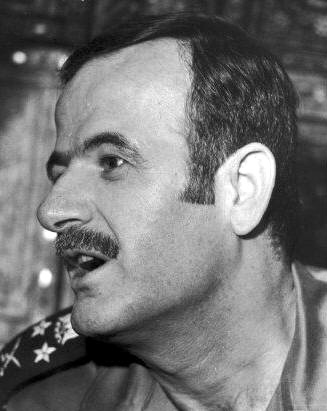
The Muslim Brotherhood’s disputes with secular leaders in Ba’athist Syria and Nasser’s Egypt forced many Brotherhood leaders such as Issam al-Attar to operate out of West Germany for much of the Cold War.[9] In the late 1970s and early 1980s, the Muslim Brotherhood and a more militant offshoot known as the Fighting Vanguard waged an armed insurgency in Syria that was brutally crushed by the Syrian government in 1982.
While researchers have not uncovered direct U.S. involvement in the insurgency, U.S. allies, namely the Israeli and Jordanian governments, did support the insurgency with U.S. foreknowledge.[10] The Syrian government continued to be a friend to Russia and post-1979 Revolution Iran, and a target of Western ire and sanctions, up to the 21st century.
Fanning Sectarian Flames—George W. Bush to Obama
As part of its Global War on Terror in the 2000s, the George W. Bush administration greatly expanded so-called democracy promotion programs throughout West Asia to support allies and undermine enemies in the region. Syria remained a prime target for regime change.

In 2003, Wesley Clark, then a director of the National Endowment for Democracy and former NATO Supreme Allied Commander Europe during the 1999 NATO bombing campaign of Yugoslavia, famously claimed that he was told about a 2001 Secretary of Defense memo shortly after 9/11 that described plans to overthrow seven governments in five years, starting with Iraq.
Syria was second on Clark’s list, followed by Lebanon, Libya, Somalia, Sudan and Iran.[11]
Syria might have become a partner or at least a tolerable bystander regarding U.S. policy in West Asia during the 2000s. The new Syrian president, Bashar al-Assad, was against al-Qaeda and religiously motivated extremism, and sought to reform Syrian society for the post-Cold War era.
However, the Syrian government opposed U.S. and Israeli actions against Iraq, Lebanon and Iran during their so-called War on Terror.
Assad’s government encouraged support for the Sunni Islamist-led insurgency in Iraq against the 2003 to 2011 U.S. occupation, a policy that would exacerbate Syria’s own Sunni Islamist-led insurgency during the 2010s.
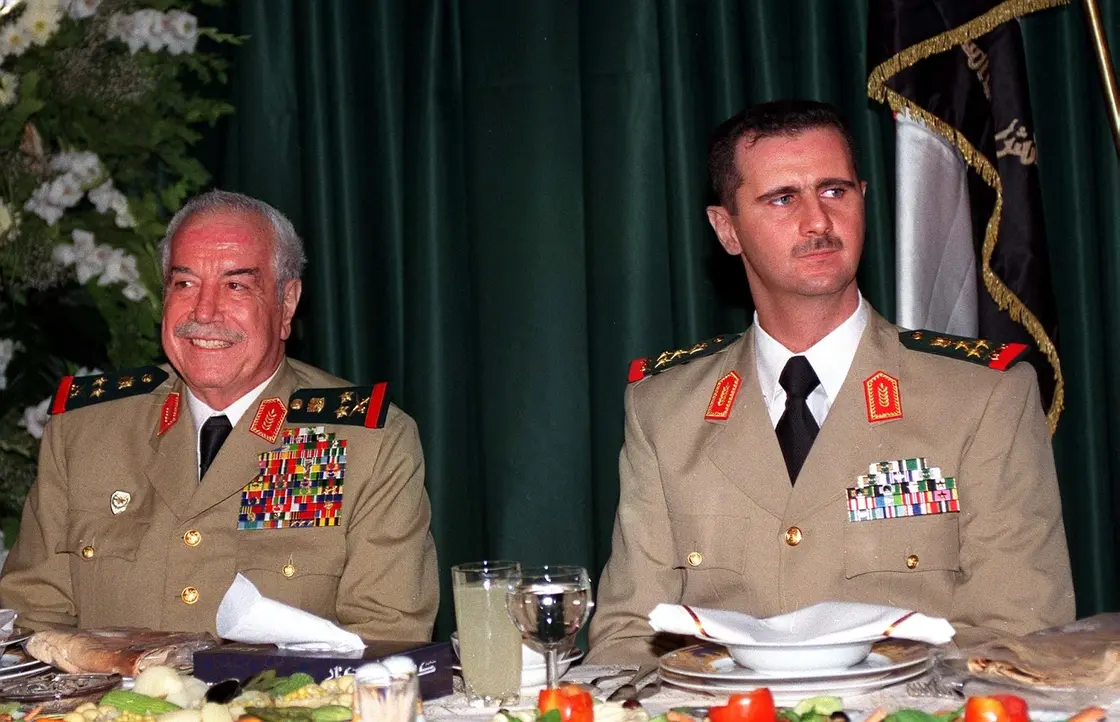
While Iraq descended into a civil war between 2006 and 2008, the U.S. covertly signaled its desire to weaponize sectarian tensions, particularly Sunni anti-Shia sentiments, as a divide-and-conquer strategy. Journalist Seymour Hersh published a chilling story in February 2007 that the W. Bush administration had decided to refocus its West Asian efforts to oppose the “Shia” powers of Iran, Hezbollah and Syria. The U.S., Saudi Arabia and Israel would work together to weaponize the region’s Sunni-Shia divide through the use of anti-Shia, and anti-Alawite, Salafi militants.[12]
Hersh quoted an unnamed U.S. government consultant who told him about secret plans between the U.S. and the Saudi government, particularly the infamous Prince Bandar bin Sultan. Hersh’s source said that the Saudi’s would “keep a very close eye on the religious fundamentalists. Their message to us [the White House] was ‘We’ve created this movement, and we can control it.’ It’s not that we don’t want the Salafis to throw bombs; it’s who they throw them at—Hezbollah [in Lebanon], Moqtada al-Sadr [in Iraq], Iran, and at the Syrians, if they continue to work with Hezbollah and Iran.”[13]
According to Hersh’s story, not even ten years after the September 11, 2001, attacks, the U.S. would once again quietly weaponize sectarian, theocratic ideologies and groups as they had during the Cold War, most infamously in Afghanistan through the CIA’s Operation Cyclone.
U.S. government cables released by WikiLeaks give evidence to some of Hersh’s claims. The cables show that, as early as 2006, nearly five years before the so-called Arab Spring protests of 2011, official U.S. policy of the George W. Bush administration was to destabilize the Syrian government by all available means, and even work to generate regime change. In the cables, the most prominent concern expressed was not Syrian human rights or democracy but the Syrian government’s relationships with U.S. geopolitical adversaries, especially Iran.
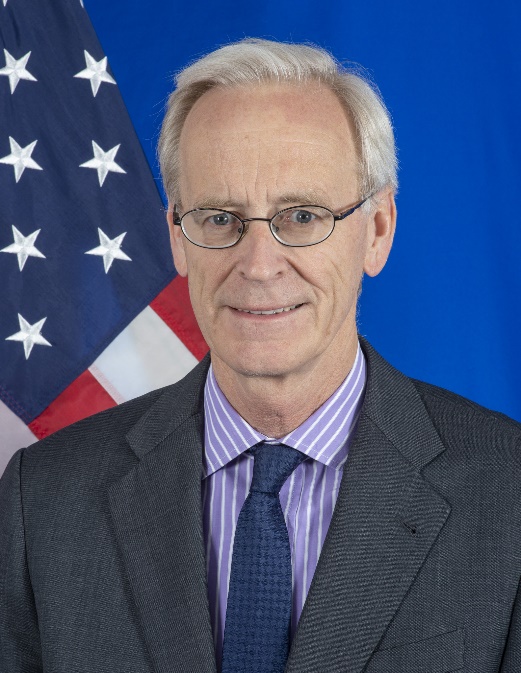
A December 2006 cable written by William Roebuck, chargé d’affaires at the U.S. embassy in Damascus, listed a series of vulnerabilities in the Syrian regime as well as possible actions the U.S. might take to exploit them. Roebuck, the top U.S. diplomat in Syria, explicitly suggested working with the Egyptians and Saudis to fan Sunni anxieties and resentment, vis-à-vis perceived Iranian (read Shia) influence in Syria.
Roebuck also proposed stoking tensions between Syrian Kurds (a largely Sunni ethnic and linguistic minority in Syria) and the Assad regime as a means of creating problems for the Ba’ath government.[14]
Roebuck admitted Syria had been the victim of al-Qaeda-linked terrorist attacks, and that the Syrian government actively opposed extremist groups. Rather than consider how Syria and the U.S. might jointly counter such extremist violence, however, Roebuck proposed publicizing issues of extremism in Syria to disseminate an image of the regime as weak and unstable.
He concluded with his thoughts on the anti-regime Syrian Islamists, writing that, while the U.S. did not yet have a good sense of their contemporary strength in the country, the Islamists were “certainly a long-term threat” to the Syrian government.[15]
Soft-Power Programs Leading up to the 2011 War
U.S. cables published by WikiLeaks also document U.S. propaganda and civil society programs in Syria, including democracy promotion programs by the U.S. Agency for International Development and core National Endowment for Democracy grantees. These programs aimed to undermine the Syrian government and develop an anti-Assad opposition both inside and outside of Syria through international allies, media, and civil society.
In December 2006, U.S. Chargé d’Affaires Roebuck suggested encouraging exiled Syrian opposition figures such as Abdul Halim Khaddam to meet with U.S. allies, namely Egypt and Saudi Arabia, and appear on regional Arab news outlets; Roebuck hoped these actions would inflame Syrian fears of a government coup and instigate provocations between Syria and its neighboring states.[16]
Such provocative efforts continued into the early Obama administration. An April 2009 cable by U.S. Chargé d’Affaires Maura Connelly details efforts by the Middle East Partnership Initiative (MEPI), a regional partner of USAID under the State Department established in 2002 and authorized to spend $12 million on Syria-specific projects between 2005 and 2010.
Connelly discusses a $1.25 million grant for the International Republican Institute (IRI) to create and disseminate public opinion research as well as digital compact discs (CDs) containing a report documenting human rights abuses along with footage by journalists. Connelly also describes a grant of more than $2 million for the Aspen Strategic Initiative Institute in Berlin to organize conferences for Syrian opposition figures to meet international non-governmental organization (NGO), media and human rights activists.
Connelly lists $6.3 million for the Democracy Council of California to discretely collaborate with the Syrian opposition to produce a website and “various broadcast concepts,” and $611,000 for a Czech NGO, People in Need, to train Syrian activists on “using the model of Eastern European democratization.”[17] The same cable describes $584,904 for Etana Press, the publishing arm of the Syrian opposition research, activism and lobbying group Etana.

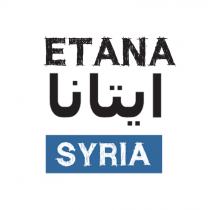
A February 2010 cable reveals that MEPI was supporting Barada TV, a London-based Syrian opposition satellite TV network.[18]
The cable also describes how a Democracy Council of California grant was used to funnel money to the Movement for Justice and Development in Syria (MJD). MJD was a “London-based moderate Islamist group” founded by former disaffected members of the Muslim Brotherhood, ostensibly to provide money to the families of opposition figures jailed by the Syrian government.

However, the cables imply that the Democracy Council of California may have funneled at least some of its $6.3 million grant to Barada TV. The U.S. cables state that Barada was “MEPI-supported,” but do not specify the amount of money MEPI gave to Barada or how it was given.
Barada TV was founded by Malik al-Abdeh, the co-founder and board member of MJD and brother of MJD co-founder and chairperson Anas al-Abdeh.
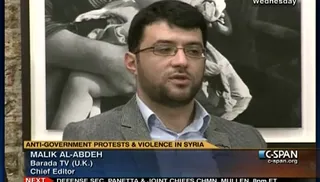
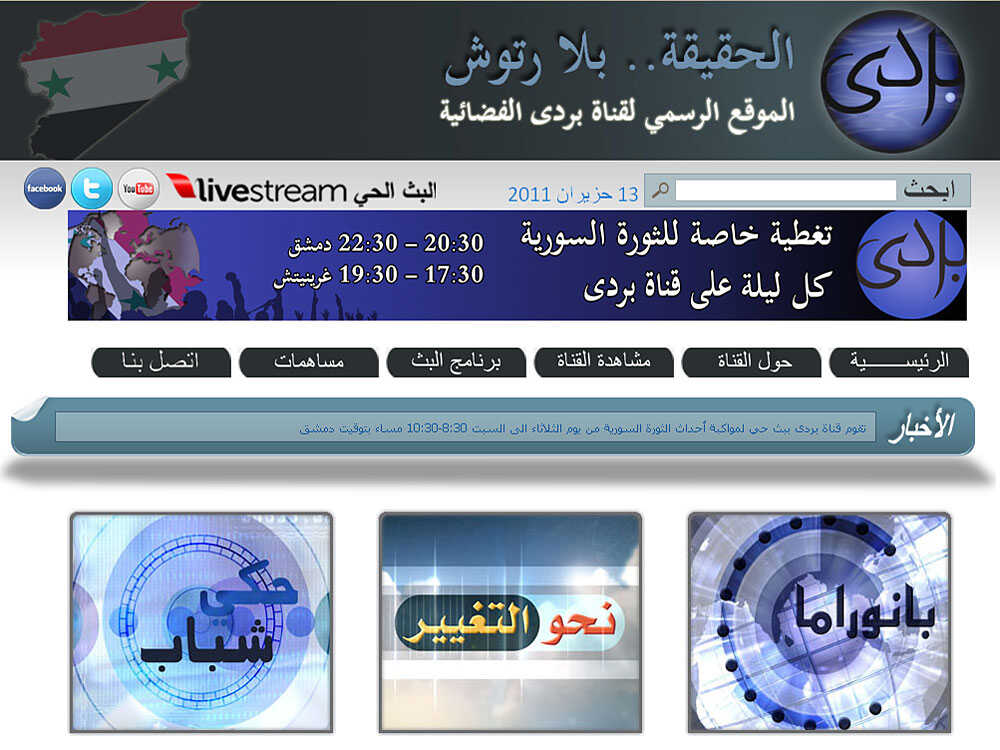
Another cable demonstrates that the Syrians suspected a connection between Barada TV and the Democracy Council of California, describing how the Damascus director of Barada TV, Suheir Atassi, was questioned by Syrian security agents who asked her if she “knew Jim Prince,” likely referring to Democracy Council President James Prince.[19] Barada TV founder Malik al-Abdeh denied getting money from the U.S. State Department, but did admit that Barada TV received at least part of its $1 million yearly budget from the Democracy Council of California.[20]
Undermining Reform to Promote Democracy
U.S. officials were aware that their so-called democracy-promotion initiatives often worked against reform and democratization in Syria. They admitted their programs encouraged the Syrian government to adopt a hardline and paranoid stance against any internal opposition, denounce and persecute those supported by the U.S. as traitors, and view democratic reforms as an existential, imperialist-inspired threat.
A February 2006 cable provides testimony from Syrian opposition leaders themselves who attested to the counterproductive nature of such programs that is, counterproductive if the genuine goal was democratization. The opposition figures argued that a recent $5 million public U.S. pledge to the opposition undermined efforts to ease tensions between the Syrian government and internal opposition and ultimately reform the Syrian government in a more democratic direction.[21]
One opposition leader, Riad Seif, told the U.S. embassy that 20 opposition leaders had decided to publicly denounce the MEPI project. They did so to avoid being investigated and possibly prosecuted by the government, and they accused the U.S. of using the opposition as “just a chip” in their “game” against Assad.[22] A September 2009 cable reveals the validity of their concerns; it discusses Syrian government scrutiny and persecution of several civil society and human rights groups funded by the U.S.[23]
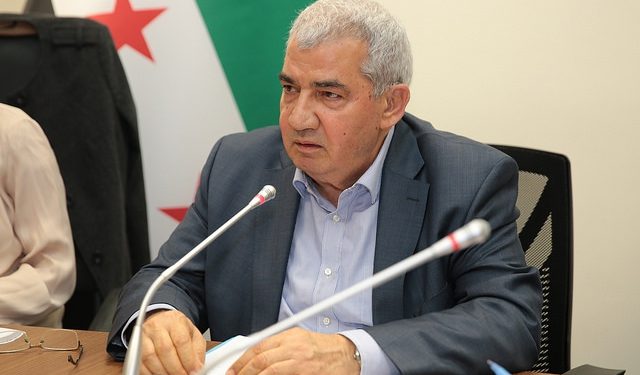
Connelly’s April 2009 cable stated that bringing “our U.S.-sponsored civil society and human rights programming into line [with] a less confrontational bilateral relationship” with the Syrian government was a “core issue” for a human rights strategy in Syria. Yet the same February 2010 cable cited previously demonstrates that the U.S. continued funding illegal groups and programs that, as admitted in the April 2009 cable, the Syrian government would “undoubtedly view…as tantamount to supporting regime change.”[24]
These cables signal a hardline U.S. approach in dealing with the Syrian government, one that was not interested in dialogue or reform but confrontation and regime change. The cables also betray a willingness, perhaps even eagerness, by the U.S. for stoking ethnic, religious and regional tensions to pursue regime change. Diplomats themselves admitted the U.S. pursued these endeavors even when they knew that doing so would undermine international and internal Syrian opposition efforts to strengthen democracy and human rights in Syria through peaceful diplomatic and political means.
The hardline U.S. approach continued despite the fact that the Assad government, as noted in the same cables, was adopting economic reforms and encouraging private enterprise and foreign investment that, in the view of establishment U.S. democratization theory, went hand in hand with democratization.[25] Even when Assad showed a willingness to move in the direction that U.S. policy wanted Syria to go, U.S. officials remained dedicated to undercutting Assad’s “efforts to shore up his legitimacy” and ultimately toppling the Ba’athist government.[26]
Conclusion
The U.S. way of dealing with Syria has been characterized by covert intervention almost since Syrian independence in 1946. Despite decades of sanctions and U.S.-sponsored coup attempts and regime-change operations, Syria has yet to establish a long-term government that will satisfy the interests of the U.S. or its closest regional ally, Israel. Western attempts to make and break governments in Syria represent some of the most farcical episodes of the Cold War, but that does not make them any less deadly or harmful for the people who have to live there.
This history of tension and intrigue colored U.S. relations with Syria going into the 21st century. The diplomatic cables publicized by WikiLeaks, written not by the critics of U.S. foreign policy but by its agents, signal that geopolitical interests, not democracy and human rights, were the U.S. foreign policy establishment’s greatest concerns in Syria. In fact, the cables indicate that U.S. policymakers were willing to undermine efforts more likely to promote democracy and human rights if it meant advancing U.S. geopolitical interests.
The Obama administration publicly advertised a shift from George W. Bush’s policy of confrontation to one of engagement with the Syrian government. Yet, the U.S. government continued covert activities that it believed would, if discovered by the Syrian government, cause the Assad regime to view the U.S. as pursuing regime change. This policy persisted even as the U.S. increasingly determined that the Syrian government was becoming aware of such activities.[27]
The U.S. government falsely presented a policy of engagement and dialogue with Syria to U.S. and international publics in the years leading up to the Syrian Civil War. Privately, they advanced a confrontational agenda that was bound to undermine public diplomatic efforts and thus justify a public shift toward regime change when the war broke out.
U.S. covert and overt aggression against Syria would accelerate during the Syrian Civil War of 2011 to 2024 and beyond. The next part in this series will focus on U.S. and Western soft power media and civil society efforts to support anti-government rebels in the early years of the war as well as their covert and sectarian nature.

Hugh Wilford, America’s Great Game: The CIA’s Secret Arabists and the Shaping of the Modern Middle East (New York: Basic Books, 2017), 96-97. ↑
Robert Eringer, “Secret Agent Man: No Wonder Miles Copeland’s Kids formed the Police,” Rolling Stone, January 16, 1986, https://www.rollingstone.com/culture/culture-features/secret-agent-man-52557/5/. ↑
Wilford, America’s Great Game, 107-108. ↑
Daniel Denvir, host, featuring Abdel Razzaq Takriti, The Dig, “Thawra Ep. 11 – Ba’ath Seize Power,” produced by Jacobin, May 23, 2024, 15:30-16:20. ↑
William Blum, Killing Hope: U.S. Military and CIA Interventions Since World War II, Updated edition (London: Zed Books, 2014), 87-89. ↑
Wilbur Eveland, Ropes of Sand: America’s Failure in the Middle East (London: W. W. Norton & Company, 1980), chapters 18 and 19. ↑
Eveland, Ropes of Sand, chapter 19. ↑
Eveland, Ropes of Sand, chapter 23. ↑
Ian Johnson, A Mosque in Munich: Nazis, the CIA, and the Muslim Brotherhood in the West (Boston: Houghton Mifflin Harcourt, 2010), 183, 197. ↑
Robert Dreyfuss, Devil’s Game: How the United States Helped Unleash Fundamentalist Islam (New York: Metropolitan Books, 2005), 190-191. ↑
Wesley K. Clark, Winning Modern Wars: Iraq, Terrorism, and the American Empire, First ed. New York: PublicAffairs, 2003, 130. ↑
Seymour M. Hersh, “The Redirection,” The New Yorker, February 25, 2007, https://www.newyorker.com/magazine/2007/03/05/the-redirection. ↑
Hersh, “The Redirection,” 2007. ↑
Cablegate, “Influencing the SARG in the End of 2006,” U.S. Embassy, Damascus, Syria, December 13, 2006 https://www.wikileaks.org/plusd/cables/06DAMASCUS5399_a.html. ↑
Cablegate, “Influencing the SARG in the End of 2006.” ↑
Cablegate, “Influencing the SARG in the End of 2006.” ↑
Cablegate, “Behavior Reform: Next Steps for a Human Rights Strategy,” U.S. Embassy, Damascus, Syria, April 28, 2009. https://www.wikileaks.org/plusd/cables/09DAMASCUS306_a.html
This cable also mentions a nearly $1 million program with the University of New Mexico to establish a web portal for NGOs and train them to use it, $316,000 for the Berlin Society to establish a Syrian women’s center that provides internet access, computer classes, and legal and medical advice, and $50,000 for the AFL-CIO’s Solidarity Center to research Syrian trade unions, connect them with U.S. labor officials, and bring AFL-CIO staff to Syria for meetings with the International Confederation of Arab Trade Unions. ↑
Cablegate, “Behavior Reform: Next Steps for a Human Rights Strategy”; Cablegate, “Human Rights Updates—SARG Budges on TIP, but Little Else,” U.S. Embassy, Damascus, Syria, February 7, 2010, https://www.wikileaks.org/plusd/cables/10DAMASCUS106_a.html. ↑
Cablegate, “Show Us the Money! SARG Suspects ‘Illegal’ USG Funding,” U.S. Embassy, Damascus, Syria, September 23, 2009, https://www.wikileaks.org/plusd/cables/09DAMASCUS692_a.html. One 2011 article in The Washington Post analyzing the leaked cables on Syria explored the connections between Barada, MJD and the Democracy Council and came to the conclusion that MEPI likely funded Barada through the Democracy Council and MJD (see Craig Whitlock, “U.S. Secretly Backed Syrian Opposition Groups, Cables Released by WikiLeaks Show,” The Washington Post, May 21, 2023, https://www.washingtonpost.com/world/us-secretly-backed-syrian-opposition-groups-cables-released-by-wikileaks-show/2011/04/14/AF1p9hwD_story.html). ↑
Sarah Morrison, “UK-Based Syrian TV Station Denies Secret Funding from U.S. Government,” The Independent, April 18, 2011, https://www.independent.co.uk/news/uk/home-news/ukbased-syrian-tv-station-denies-secret-funding-from-us-government-2269730.html.) ↑
Cablegate, “Announcement to Fund Opposition Harshly Criticized by Anti-Regime Elements, Others,” U.S. Embassy, Damascus, Syria, February 21, 2006. https://www.wikileaks.org/plusd/cables/06DAMASCUS701_a.html ↑
Cablegate, “Announcement to Fund Opposition Harshly Criticized by Anti-Regime Elements, Others.” ↑
Cablegate, “Show Us the Money! SARG Suspects ‘Illegal’ USG Funding.” ↑
Cablegate, “Behavior Reform: Next Steps for a Human Rights Strategy”; Cablegate, “Human Rights Updates—SARG Budges on TIP, but Little Else.” For a corroborating analysis of the Syria cables and U.S. regime-change policy prior to the Syrian Civil War, see Robert Naiman, “Syria,” in The WikiLeaks Files: The World According to US Empire, by Julian Assange et al. (London: Verso, 2015), 312-15. ↑
Cablegate, “Influencing the SARG in the End of 2006.” ↑
Cablegate, “Influencing the SARG in the End of 2006.” ↑
See Naiman, “Syria,” 320. ↑
CovertAction Magazine is made possible by subscriptions, orders and donations from readers like you.
Blow the Whistle on U.S. Imperialism
Click the whistle and donate
When you donate to CovertAction Magazine, you are supporting investigative journalism. Your contributions go directly to supporting the development, production, editing, and dissemination of the Magazine.
CovertAction Magazine does not receive corporate or government sponsorship. Yet, we hold a steadfast commitment to providing compensation for writers, editorial and technical support. Your support helps facilitate this compensation as well as increase the caliber of this work.
Please make a donation by clicking on the donate logo above and enter the amount and your credit or debit card information.
CovertAction Institute, Inc. (CAI) is a 501(c)(3) non-profit organization and your gift is tax-deductible for federal income purposes. CAI’s tax-exempt ID number is 87-2461683.
We sincerely thank you for your support.
Disclaimer: The contents of this article are the sole responsibility of the author(s). CovertAction Institute, Inc. (CAI), including its Board of Directors (BD), Editorial Board (EB), Advisory Board (AB), staff, volunteers and its projects (including CovertAction Magazine) are not responsible for any inaccurate or incorrect statement in this article. This article also does not necessarily represent the views the BD, the EB, the AB, staff, volunteers, or any members of its projects.
Differing viewpoints: CAM publishes articles with differing viewpoints in an effort to nurture vibrant debate and thoughtful critical analysis. Feel free to comment on the articles in the comment section and/or send your letters to the Editors, which we will publish in the Letters column.
Copyrighted Material: This web site may contain copyrighted material the use of which has not always been specifically authorized by the copyright owner. As a not-for-profit charitable organization incorporated in the State of New York, we are making such material available in an effort to advance the understanding of humanity’s problems and hopefully to help find solutions for those problems. We believe this constitutes a ‘fair use’ of any such copyrighted material as provided for in section 107 of the US Copyright Law. You can read more about ‘fair use’ and US Copyright Law at the Legal Information Institute of Cornell Law School.
Republishing: CovertAction Magazine (CAM) grants permission to cross-post CAM articles on not-for-profit community internet sites as long as the source is acknowledged together with a hyperlink to the original CovertAction Magazine article. Also, kindly let us know at info@CovertActionMagazine.com. For publication of CAM articles in print or other forms including commercial internet sites, contact: info@CovertActionMagazine.com.
By using this site, you agree to these terms above.
About the Author

Ben Arthur Thomason received his Ph.D. in American Culture Studies from Bowling Green State University in 2024.
He specializes in the history, culture, and geopolitical economy of U.S. imperialism and soft power. He has published peer-reviewed articles, including “Save the Children, Launch the Bombs: Propaganda Agents Behind The White Helmets (2016) Documentary and Media Imperialism in the Syrian Civil War,” in The Projector (2022), and “The Moderate Rebel Industry: Spaces of Western Public-Private Civil Society and Propaganda Warfare in the Syrian Civil War,” in Media, War and Conflict (2024).
He is currently seeking to publish his manuscript, Make Democracy Safe for Empire: US Democracy Promotion from the Cold War to the 21st Century.
Get in touch with Ben by going to benarthurthomason.com or by emailing him at benthomason696@gmail.com.


